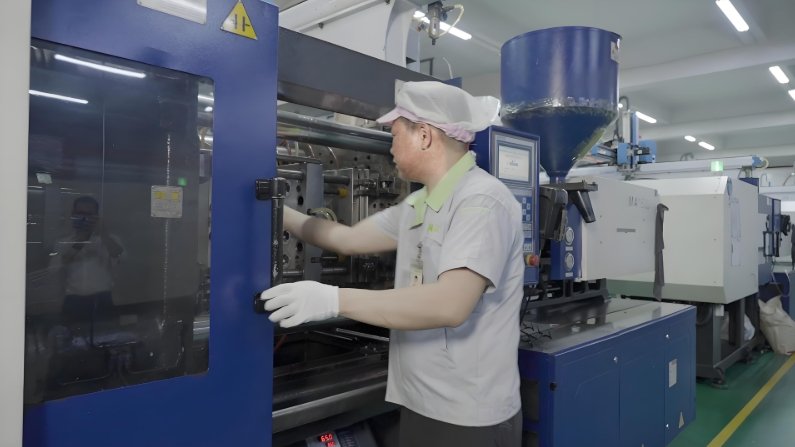
The medical industry depends on precision. Medical injection molding has transformed healthcare by producing accurate, reliable, and cost-effective medical devices. Over the decades, mold makers have played a vital role in advancing this technology. From early plastic molding to today’s high-tech automation, the industry has evolved significantly.
1. The Beginnings of Medical Injection Molding
1.1 Early Plastic Use in Medicine
- Before the 1940s, most medical tools were made of metal or glass.
- Early plastic molding created basic syringes and containers.
- Materials were limited, and precision was low.
1.2 The First Injection Molding Machines
- In the 1940s, injection molding machines improved plastic production.
- This allowed for faster and more consistent medical parts.
- Mold makers started designing custom molds for healthcare.
2. The Growth of Medical Injection Molding in the 1950s-1970s
2.1 New Materials for Medical Applications
- The 1950s introduced biocompatible plastics.
- PVC and polyethylene became common for medical tubing and syringes.
- Medical injection molding gained popularity due to low costs and sterilization capabilities.
2.2 Mass Production of Medical Devices
- Hospitals required disposable medical tools.
- Injection molding made it possible to produce large volumes quickly.
- The industry shifted from reusable to single-use plastics.
2.3 Improved Mold Making Techniques
- Mold makers refined mold designs for better accuracy.
- Multi-cavity molds increased production efficiency.
- New cooling methods reduced molding cycle times.
3. Technological Advancements in the 1980s-1990s
3.1 Computerized Mold Design
- Computer-aided design (CAD) revolutionized mold making.
- Designs became more complex and precise.
- Medical injection molding entered a new era of automation.
3.2 Micro-Molding for Tiny Medical Parts
- The 1980s saw the rise of micro-molding for small components.
- Tiny parts for catheters, surgical tools, and implants were produced.
- Accuracy improved dramatically with tighter tolerances.
3.3 Sterile and Cleanroom Manufacturing
- Medical injection molding moved to cleanroom environments.
- This ensured contamination-free production.
- Hospitals relied on injection molding for high-precision medical devices.
4. The Rise of High-Performance Plastics in the 2000s
4.1 New Medical-Grade Materials
- Medical-grade polycarbonates, silicones, and PEEK emerged.
- These materials improved durability and biocompatibility.
- Devices became stronger, lighter, and safer.
4.2 Advanced Mold Making Innovations
- 3D printing accelerated mold prototyping.
- Mold makers used laser machining for ultra-fine details.
- Injection molding became even more cost-effective and precise.
4.3 Overmolding and Multi-Material Molding
- Combines soft and hard plastics in single-use medical devices.
- Used for ergonomic designs like surgical grips and prosthetics.
- Improves functionality and patient comfort.
5. Modern Injection Molding: 2010-Present
5.1 Smart Manufacturing and Automation
- AI-powered quality control systems detect defects instantly.
- Robotics handle mold changes, material feeding, and assembly.
- Production speeds increased while reducing human error.
5.2 The Role of Sustainable Materials
- Biodegradable medical plastics gained popularity.
- Hospitals demand eco-friendly alternatives for single-use products.
- Research focuses on reducing plastic waste in healthcare.
5.3 The Impact of COVID-19 on Medical Injection Molding
- High demand for syringes, ventilator parts, and test kits.
- Mold makers ramped up production to meet urgent needs.
- Speed and precision became more critical than ever.
6. The Future of Medical Injection Molding
6.1 AI and Machine Learning for Process Optimization
- AI will predict mold wear and optimize production.
- Smart sensors will ensure perfect injection parameters.
- Reduces waste and improves energy efficiency.
6.2 Digital Twin Technology
- Creates a virtual copy of the molding process.
- Helps manufacturers simulate and improve efficiency.
- Reduces costly errors before full-scale production.
6.3 3D Printing for Rapid Mold Development
- Faster prototyping for custom medical devices.
- Lowers production costs for small-batch manufacturing.
- Ideal for personalized implants and prosthetics.
6.4 Sustainable Medical Plastics and Recycling
- New eco-friendly bioplastics for disposable medical devices.
- Medical waste reduction through recyclable materials.
- Governments push for green manufacturing solutions.
7. How Mold Makers Continue to Shape the Industry
7.1 Advancing Mold Design Technologies
- Mold makers create intricate, high-precision molds.
- High-speed milling and laser cutting improve accuracy.
- Molds last longer and require less maintenance.
7.2 Customization for Medical Needs
- Personalized orthopedic implants and prosthetics.
- Mold designs for patient-specific medical devices.
- Helps tailor healthcare solutions to individual patients.
7.3 Improving Global Healthcare Access
- Low-cost molding for affordable medical tools.
- Mold makers support emerging markets with cost-efficient solutions.
- Expands access to life-saving medical devices worldwide.
Medical injection molding has evolved over decades, revolutionizing healthcare. From simple syringes to advanced implants, mold makers have driven innovation. Future advancements in AI, sustainability, and precision molding will further transform the industry. As technology advances, medical injection molding will continue to shape modern healthcare.
